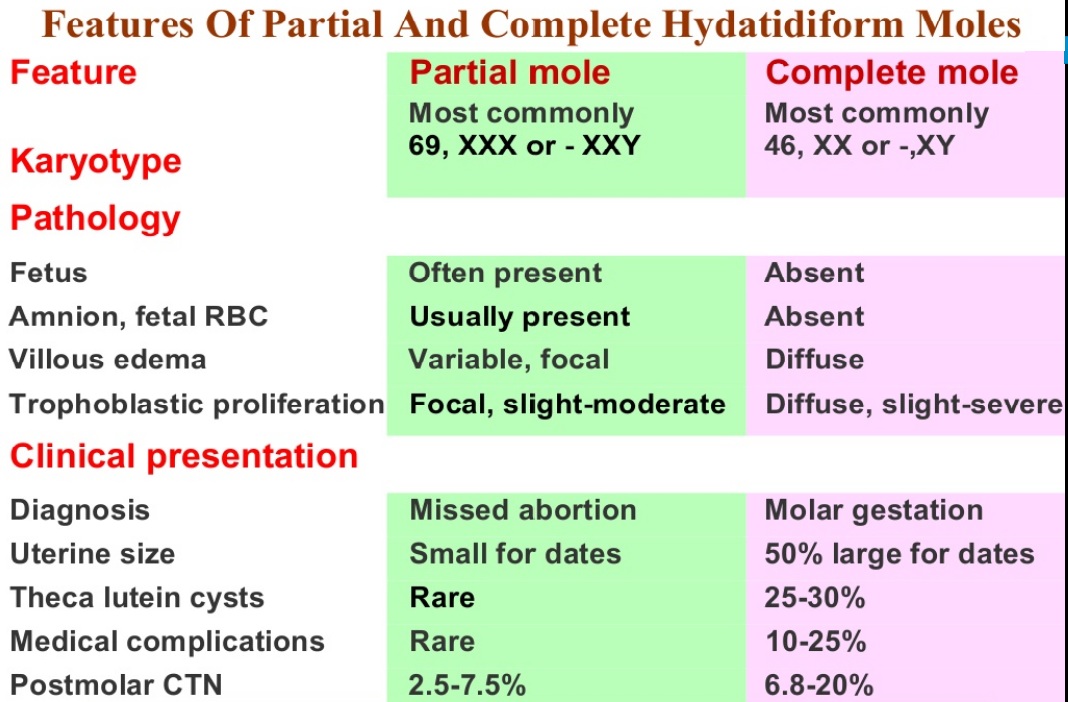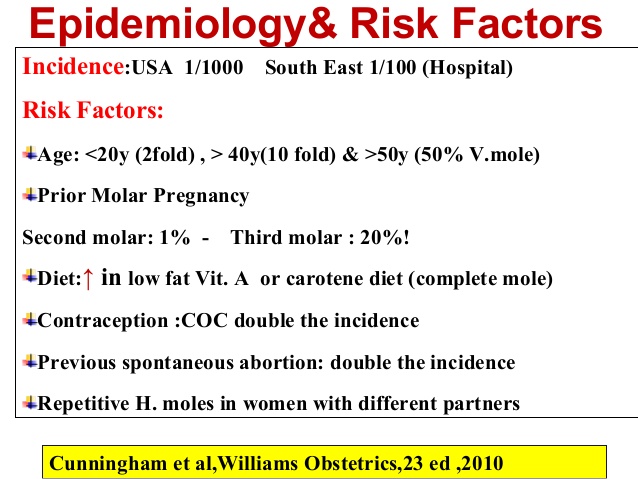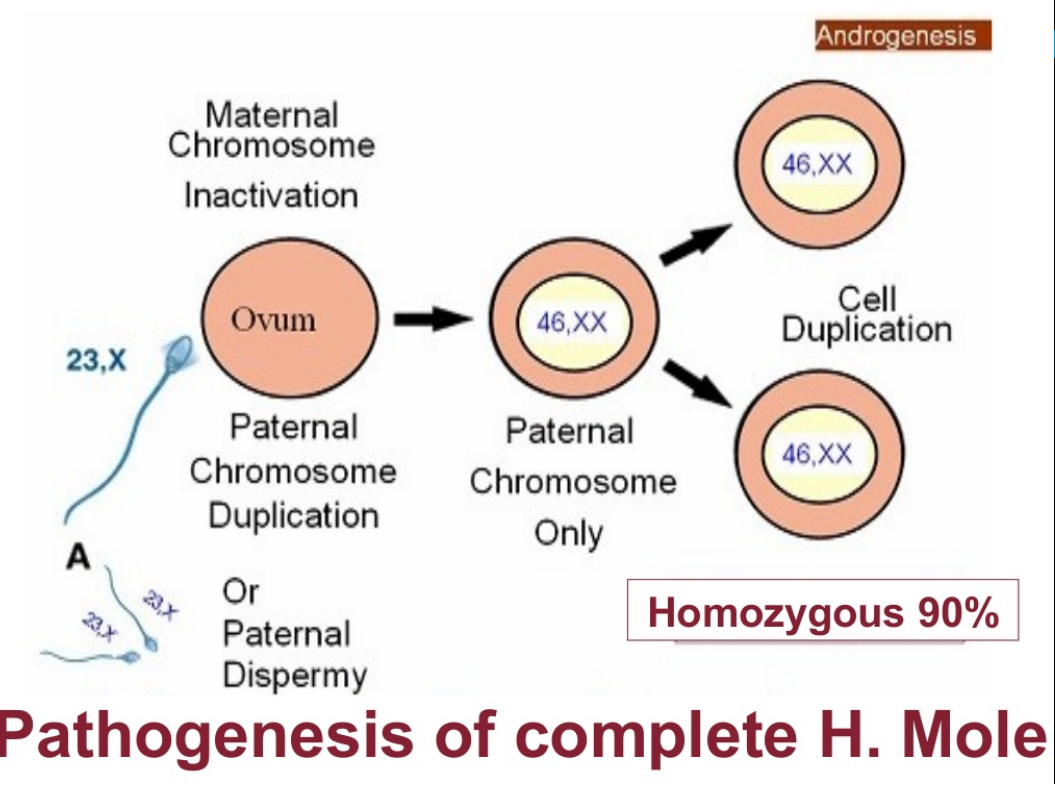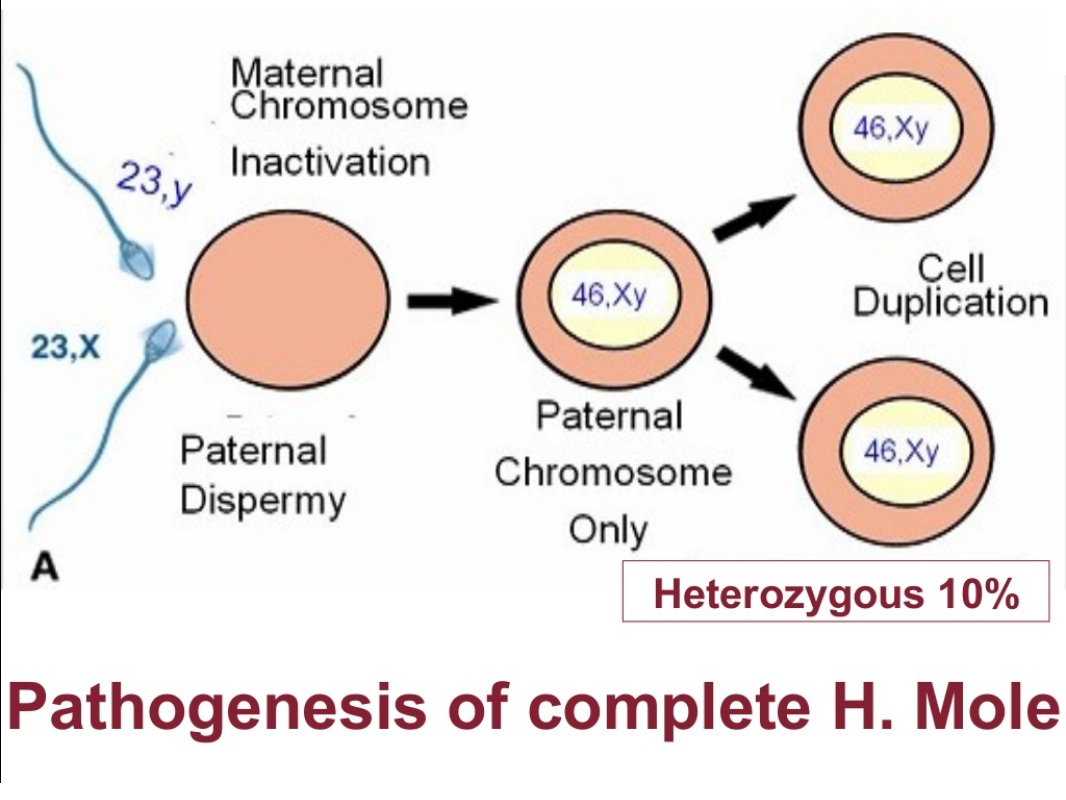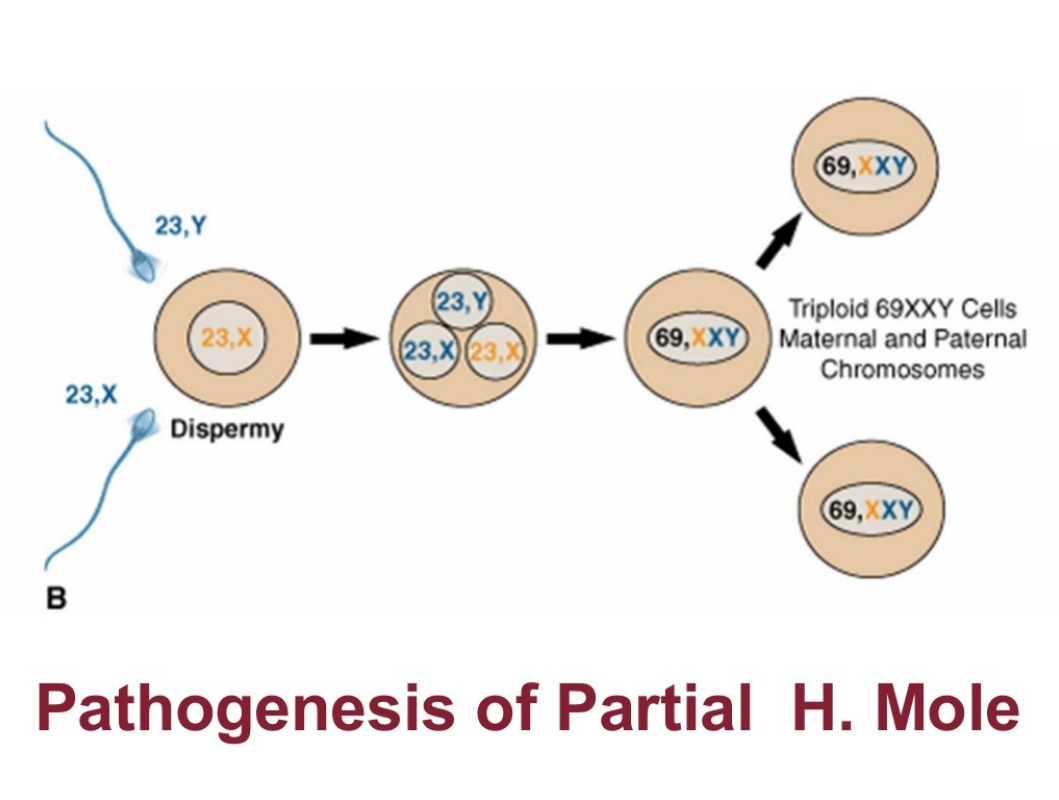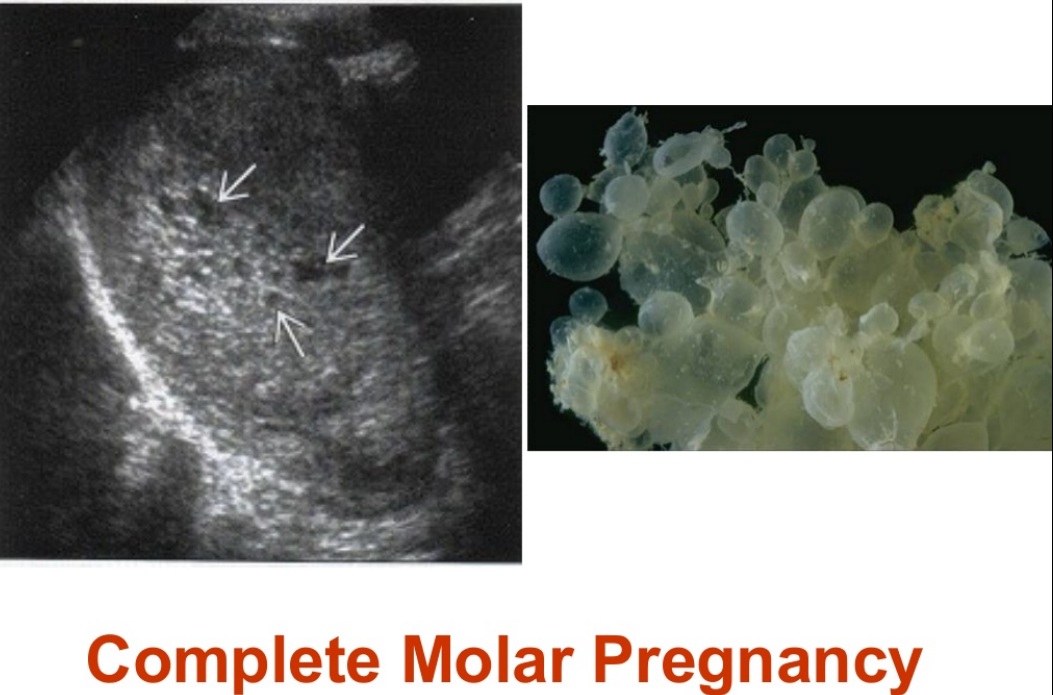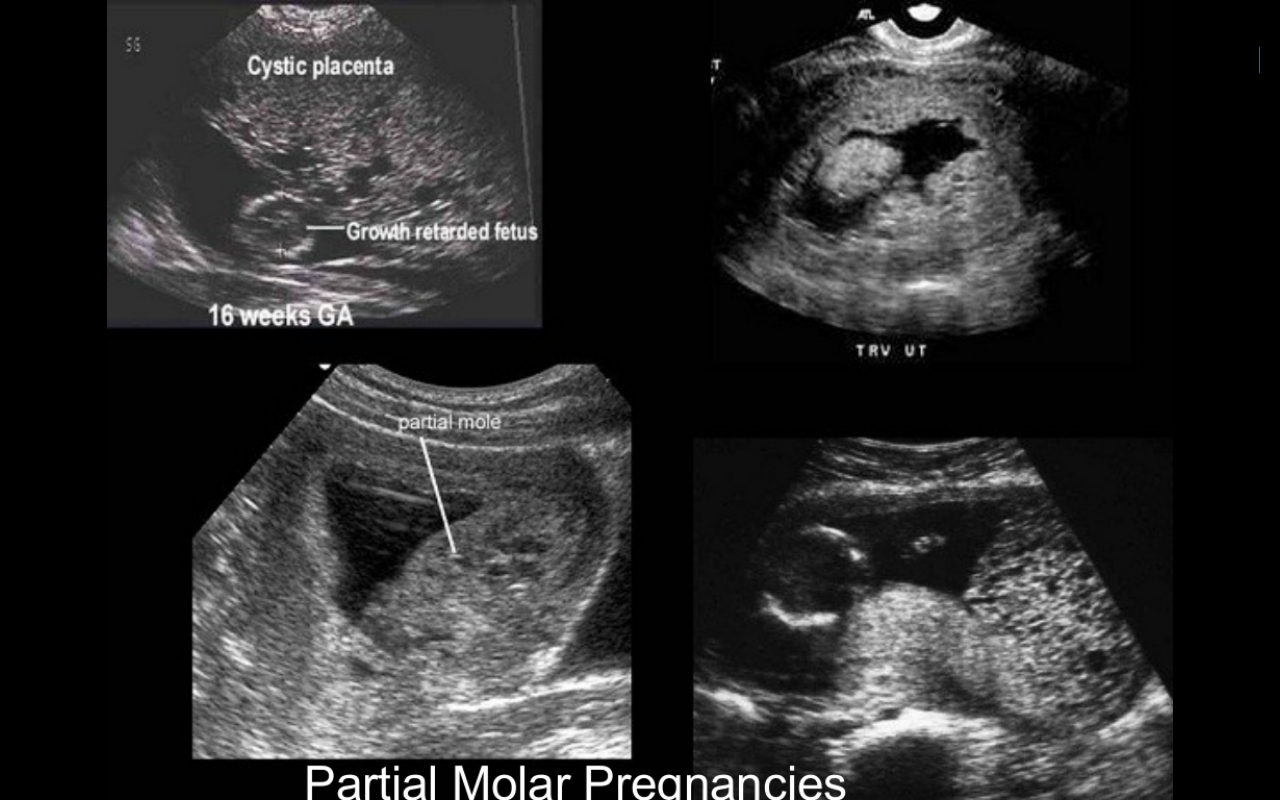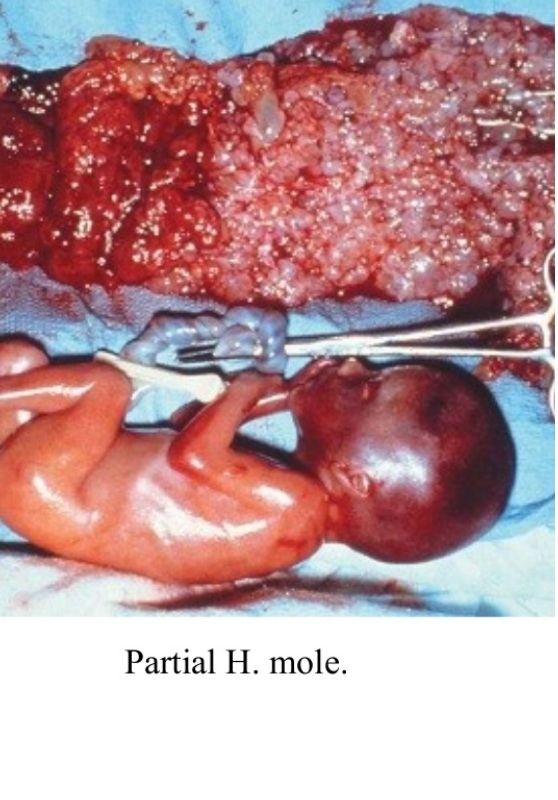Molar Pregnancy
Definition
An abnormal form of pregnancy in which a non-vialble fertilized egg implants in the uterus
Also known as Hydatiform mole
It is a gestationan trophoblastic disease
A mass grows in the uterus that has swollen chorionic villi.
The dilated villi are in clusters and resemble grapes.
Epidemiology and Risk Factors
Age : < 20 (2 fold), > 40 (10 fold) & > 50 (50 %)
Prior molar pregnancy
Diet : low fat low vit A or carotene diet
Contraception : double the incidence
Previous spontaneous abortion : double the incidence
Multiple partners
Higher educational levels
Smoking
Irregular menstrual cycles
Only male infants previously
Types
Complete molar pregnancy
Partial molar pregnancy
Complete
Completer molar pregnancy has only placental parts; no fetus. Occurs when an empty egg (egg without nucleus) is fertilized
Placenta grows and produces HCG
USGM : only placenta is seen
One sperm fertilizing : 90%
Two sperms fertilizing : 10%
Egg does not contain DNA
The sperm reduplicates forming a complete 46 chromosome set
Usually the geno type is 46, XX (diploid) due to mitosis of the fertilizing sperm
Can also be 46 XY
But 46 YY is not seen
Complete hydatidform moles have a risk of choriocarcinoma/invasive mole
Partial
The pregnancy has both abnormal cells and an embryo which has birth defects which will be overcome by the growing abnormal mass quickly
Rarely twins are conceived; one embryo begins to develop normally while the mole consumes the normal embryo.
When a haploid egg is fertilized by two sperms or by one sperm reduplicates a partial mole with genotype 69, XXY (Triploid) or 92, XXXY (Tetraploid).
Partial moles can become invasive, but are not associated with choriocarcinoma.
Signs and Symptoms
Painless vaginal bleeding / a dark discharge from the vagina in the fourth to fifth month of pregnancy
Uterus larger than expected
Passage of grapelike tissue from the vagina
Absence of foetal movement or heartbeat
Ovaries enlarged
Hyperemesis
Increased BP may occur
Protein in urine
Very high levels of Human Chorionic Gonadotrophin
Hyperthyroidism – weight loss and increased appetite.
Diagnosis
In most cases, molar pregnancy is discovered when a miscarriage occurs.
USGM
Blood and urine - high levels of human chorionic gonadotropin (hCG)
Treatment
In most cases the molar pregnancy will miscarry spontaneously by the fourth month
D&C is usually performed a few days after miscarriage to be certain that no molar tissue is left
If not spontaneous -
A medication to trigger the uterus to release the pregnancy, followed by a D&C.
If not expelled despite medication, vacuum aspiration. This procedure is similar to a D&C. and removed using a gentle suction instrument.
For older women who do not want any more children, a hysterectomy to prevent cancer.
Follow up
Because of the risk of abnormal molar cells left in the womb continuing to grow (persistent trophoblastic disease) or developing into cancer (choriocarcinoma), monitoring for between 2 and 12 months is usually required.
Regular blood tests are performed to monitor the fall of hCG levels.
Elevated levels of hCG after the pregnancy has ended can signal that not all of the molar tissue has been removed or that cancer is developing as a result of the molar pregnancy.
While the condition is being monitored it is important to avoid pregnancy up to one year.
* * * * * * * * * * * * * *


